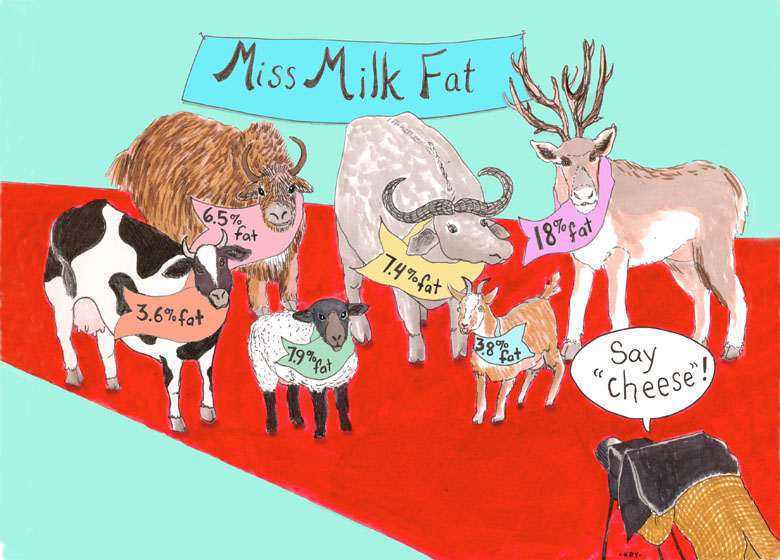Jobe'S Cheese Lab – Inside The Ethical Cheese Lab
On average, Americans annually consume more than 20 pounds of cheese per person. That is a lot of cheese, and it all comes from animal-based milk! But how does milk, which is a liquid, become cheese, which is a solid? Let’s figure it out by trying the process ourselves. Yep, we’re going to make CHEESE.
Đang xem: Jobe's cheese lab
Where the cheese-making process starts: milk
Many animals create milk, but milk used in commercial cheese making generally comes from cows, sheep, and goats. Some varieties of cheese are made with water buffalo, yaks, moose, and reindeer. Yeah, you read that correctly—reindeer! All of these creatures produce milk to feed their young. Because the needs of those young are different, the concentrations of water, proteins, lactose, and fat vary.

Illustration by Karen Romano Young
Most of what’s in a glass of milk is water, regardless of the species the milk came from. Suspended in that water is a mixture of proteins, lactose, and fat globules all too small for you to see with the naked eye. This mixture of molecules is what gives milk its color.
Xem thêm: Trà Chanh Ngõ 8 – Crab And Beef Hot Pot: Ngõ 8
To make cheese, the environmental conditions of the milk must change to facilitate a chemical reaction. As a result of the reaction, milk is separated into two parts: curds (solid) and whey (liquid). This stage is common to all cheese making, and it’s a great place to evaluate which milks are best to make cheese with. Some people stop at this point and enjoy eating the curds, or they process it further and create a block or ball of cheese to enjoy.
Without curds, you cannot make a good cheese. While making your cheese curds, try to answer the following questions:
How do differences in milk composition (fat, protein, and sugar) affect cheese curd formation?What components of milk end up in the cheese curds?
Let’s create and compare curds!
To test how milk composition affects curd formation, you could use milk from different animals, although it’s sometimes hard to find a variety of animal milk types at the grocery store. Good news! You can also test milk from the same animal—like cows, for instance—if it comes in varying compositions (e.g. nonfat, 1%, or half & half). By comparing the curds produced with different kinds of milk, you can better understand how things like carbohydrates, fat, and protein affect curd formation.
Xem thêm: Khu Biệt Thự Quận 9 Đang Hot Nhất Hiện Nay, Mua Bán Biệt Thự Quận 9 Diện Tích 400
Before you start:
Review the observations you will be collecting while conducting your experiment.Use information from the milk nutrition labels and observation chart to develop a prediction: Which type of milk will produce the highest yield (mass) of curds? Explain why you made that prediction.
Materials per experimenter/group
1 cup of each type of milk (3-4 different varieties)






Bình luận